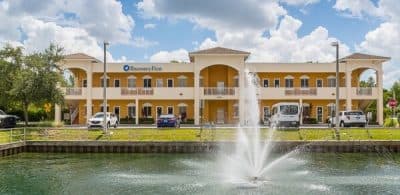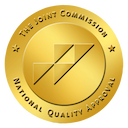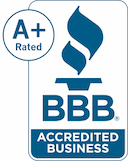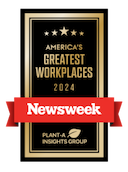Alcohol & Drug Rehab Near Orlando Metro Area, Florida
At Recovery First Treatment Center in South Florida, we’re here to help you or your loved one take that crucial first step toward lasting recovery. Our Florida rehab offers a comprehensive range of evidence-based therapies, all delivered with the respect, compassion, and personalized care you deserve.
Discover our diverse treatment programs, welcoming amenities, straightforward admissions process, and flexible financial options—everything designed to support you with clarity and confidence on your path to healing.

Why Choose Recovery First Treatment Center
Recovery First is a trusted rehab center near the Orlando metro area, offering personalized care for substance use disorders. With a high staff-to-patient ratio, comfortable amenities, and specialized programs, we provide a supportive environment where lasting recovery begins.
Struggling with substance use can feel overwhelming, leaving you or someone you care about unsure of where to turn. But you’re not alone—and there is hope. Effective, evidence-based treatment options are available, and the first step toward lasting recovery can begin right here with inpatient addiction treatment in Hollywood, Fl.
Addiction Treatment at Our Rehab in South Florida
If you’re asking, “What is addiction treatment?” or “What happens at rehab?” our admissions team is ready to provide you with answers and guide you to the right drug and alcohol rehab near the Orlando metro area.
Recovery First provides a comprehensive range of evidence-based addiction treatment programs, making us a trusted and accessible option for those seeking lasting recovery.
Our facility offers a safe, supportive environment with multiple levels of care tailored to meet you wherever you are in your recovery journey.
At Recovery First, we focus on personalized, expert care for substance use disorders. Our approach includes a range of levels of addiction treatment, including:
- Often the first step in the recovery process for those who are drug- or alcohol-dependent.
- Length of detox is typically 5–7 days.
- Patients are supported around the clock by trained medical staff.
Inpatient addiction treatment (residential treatment)
- Patients stay at the facility in apartment-style accommodations and receive treatment on a structured daily schedule.
- Optimal for patients with co-occurring mental health disorders or severe addictions.
- Medical and clinical staff are available to assist patients 24/7.
Outpatient addiction treatment near Miami
- Options range from a more intensive partial hospitalization program (PHP) to a less time-consuming intensive outpatient program (IOP).
- Patients attend therapy and group support sessions on a set schedule.
- Patients are not required to live at the facility.
- We also offer addiction treatment services via telehealth.
- Helps patients sustain long-term recovery and avoid relapse through continued support.
As part of our levels of care, proven addiction treatment therapy is incorporated into treatment. Types of therapy include:
- Group therapy.
- Individual therapy.
- Cognitive Behavioral Therapy (CBT).
- Dialectical Behavior Therapy (DBT).
- Trauma-based Therapy.
To learn more about our programs and treatment admissions process, call us at today.
Amenities and Offerings at Recovery First
At Recovery First, which offers addiction treatment near Hollywood, Florida, we know that true healing happens in an environment where you feel safe, supported, and comfortable.
That’s why our facility is thoughtfully designed to promote both physical comfort and emotional well-being at every step of your recovery journey.
Our amenities and accommodations include:
- Inviting indoor and outdoor spaces for rest, connection, and relaxation.
- A fully equipped fitness center to help restore physical strength and wellness.
- Peaceful areas for mindfulness, meditation, and quiet reflection.
- Chef-prepared, nutritious meals designed to fuel and nourish your body.
- Chef-prepared, nutritious meals designed to fuel and nourish your body.
Take a Look Inside Our South Florida Rehab Center

Specialized Rehab Programs Near Orlando Metro
Specialized programs enhance traditional addiction treatment by providing targeted support tailored to each individual’s unique needs and experiences.
At Recovery First, we offer a variety of customized programs that deepen the recovery process, promote lasting healing, and help individuals build the tools and confidence needed for a successful life after treatment.
Choosing the right rehab center means finding more than just standard treatment—it’s about discovering care that aligns with your unique needs and experiences.
Specialized programs can play a vital role in recovery by addressing personal challenges, life circumstances, and goals, helping to create a more meaningful and lasting path to healing.
At Recovery First, we’re proud to offer a range of specialty programs that bring added depth, flexibility, and individualized support to each person’s journey. Our customized offerings include:
How to Get to Recovery First Treatment Center From Orlando Metro Area

How to Pay for Addiction Treatment Near the Orlando Metro Area, Florida
If you're seeking rehab near the Orlando metro area, you may be able to cover treatment through health insurance, private pay, or flexible financing plans.
Don’t let financial concerns hold you back. Our team is here to guide you through paying for addiction treatment so you can focus on what matters most—your recovery.
Does Insurance Cover the Cost of Drug Rehab Near the Orlando Metro Area?
Yes—health insurance can significantly reduce the cost of rehab. Many plans offer partial or full coverage for substance use treatment, though exact benefits vary by policy.
For Veterans, Recovery First is honored to be an approved community care provider, which means those with VA benefits may be eligible for covered treatment.
At Recovery First Treatment Center, we’re here to make the insurance process simple and stress-free. Conveniently located near the Orlando metro area, we work with a wide range of major insurance providers, including:
Our experienced team is ready to help you navigate your coverage and get the support you need.
To verify your insurance coverage for rehab in South Florida, simply complete our now.
Get Admitted to Addiction Treatment Near the Orlando Metro Area
Looking for alcohol rehab near the Orlando metro area? Recovery First Treatment Center in Hollywood, FL offers comprehensive care—including medical detox and residential treatment—to help you build a strong, confident start to your recovery journey.
Our admissions team is available 24/7 at , ready to answer your questions and guide you through each step of the process.
There’s no better time to begin your path to lasting sobriety. If you’re searching for expert drug or alcohol rehab near Orlando, compassionate, professional care is just a short drive away.
Reach out today to learn more about our treatment admissions process—and take the first step toward the healthier, sober life you deserve.


